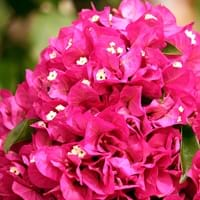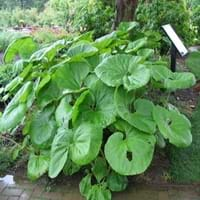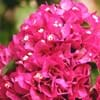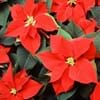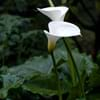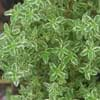Life Span
Perennial
Perennial
Type
Shrub
Herbaceous Perennial
Origin
Hybrid origin
China, Japan, Korea
Types
Brasilensis, Easter Parade, Formosa, Rosenka (Orange), James Walker, Jubilee Showlady, Barbara Karst, Elizabeth Angus
Not Available
Number of Varieties
Not Available
Habitat
Rainforest, Tropical rainforest
Dappled Shade, meadows, Shady Edge, Sunny Edge, Woodland Garden
USDA Hardiness Zone
9-11
5-9
Sunset Zone
22, 23, 24
2a, 2b, 3a, 3b, 4, 5, 6, 7, 8, 9, 10, 14, 15, 16, 17, 18, 19, 20, 21, 22, 23, 24
Habit
Cushion/Mound-forming
Clump-Forming
Flower Color
Gold, Magenta
Light Yellow, Ivory
Flower Color Modifier
Not Available
Bicolor
Fruit Color
Brown, Green
Not Available
Leaf Color in Spring
Dark Green
Green
Leaf Color in Summer
Dark Green
Green
Leaf Color in Fall
Dark Green
Green
Leaf Color in Winter
Dark Green
Not Available
Plant Season
Spring, Summer, Fall, Winter
Spring, Summer, Fall
Sunlight
Full Sun
Partial shade, Full Shade
Type of Soil
Clay, Loam, Sand
Clay, Loam, Sand
The pH of Soil
Acidic, Neutral, Alkaline
Acidic, Neutral, Alkaline
Soil Drainage
Well drained
Poorly Drained
Bloom Time
Indeterminate
Early Spring, Late Winter
Where to Plant?
Ground
Container, Ground, Pot
How to Plant?
Grafting, Stem Planting, Transplanting
Divison, Seedlings
Plant Maintenance
Medium
Medium
Watering Requirements
Medium
Water once every two or three weeks
In Summer
Lots of watering
Lots of watering
In Spring
Moderate
Moderate
In Winter
Average Water
Average Water
Soil pH
Acidic, Neutral, Alkaline
Acidic, Neutral, Alkaline
Soil Type
Clay, Loam, Sand
Clay, Loam, Sand
Soil Drainage Capacity
Well drained
Poorly Drained
Sun Exposure
Full Sun
Partial shade, Full Shade
Pruning
Cut or pinch the stems, Prune for shortening long shoots, Prune if you want to improve plant shape, Prune in the late winter or spring, Prune prior to new growth, Prune to control growth, Remove dead or diseased plant parts
Remove the old foliage
Fertilizers
All-Purpose Liquid Fertilizer
Use a fertilizer ratio of 16-4-8
Pests and Diseases
Aphids, Leaf spot, Mealybugs, Red spider mite, Root rot, Whiteflies
No serious insect or disease problems
Plant Tolerance
Drought
Drought
Flower Petal Number
Single
Not Available
Foliage Texture
Medium
Bold
Foliage Sheen
Matte
Glossy
Attracts
Hummingbirds
Not Available
Allergy
Itchiness, Skin rash
no allergic reactions
Aesthetic Uses
Showy Purposes, Used for decorating walls, fences, gates, hedges, etc.
Bog Garden, Showy Purposes
Beauty Benefits
Not Available
Not Available
Environmental Uses
Air purification
Air purification
Medicinal Uses
Not Available
Antiasthamatic, Antispasmodic, Expectorant, Poultice
Part of Plant Used
Whole plant
Flowers, Stem
Other Uses
Showy Purposes
Can be boiled and seasoned, pickled, Used as umbrellas by Japanese children, Used as walking sticks, Used like rhubarb
Used As Indoor Plant
No
No
Used As Outdoor Plant
Yes
Yes
Garden Design
Container, Foundation, Groundcover, Hedges, Mixed Border, Rock Garden, Wall, Tropical
Bog Garden, Container, Feature Plant, Water Gardens
Botanical Name
BOUGAINVILLEA 'Helen Johnson'
PETASITES japonicus
Common Name
Bougainvillea
Giant Butterbur, Japanese Butterbur
In Hindi
Bougainvillea
Giant Butterbur
In German
Bougainvillea
Riesen Pestwurz
In French
Bougainvilliers
géant Butterbur
In Spanish
Bougainvillea
gigante petasita
In Greek
Bougainvillea
Giant Butterbur
In Portuguese
Bougainvillea
Carrapicho gigante
In Polish
Bugenwilli
Giant Lepiężnik
In Latin
Bougainvillea
Giant Butterbur
Phylum
Spermatophyta
Magnoliophyta
Class
Dicotyledonae
Magnoliopsida
Order
Caryophyllales
Asterales
Family
Nyctaginaceae
Asteraceae
Genus
Bougainvillea
Petasites
Clade
Angiosperms, Core eudicots, Eudicots
Angiosperms, Asterids, Eudicots
Tribe
Not Available
Senecioneae
Subfamily
Not Available
Asteroideae
Number of Species
Not Available
Importance of Bougainvillea and Giant Butterbur
Want to have the most appropriate plant for your garden? You might want to know the importance of Bougainvillea and Giant Butterbur. Basically, these two plants vary in many aspects. Compare Bougainvillea and Giant Butterbur as they differ in many characteristics such as their life, care, benefits, facts, etc. Every gardener must at least have the slightest clue about the plants he wants to plant in his garden. Compare their benefits, which differ in many ways like facts and uses. The medicinal use of Bougainvillea is Not Available whereas of Giant Butterbur is Antiasthamatic, Antispasmodic, Expectorant and Poultice. Bougainvillea has beauty benefits as follows: Not Available while Giant Butterbur has beauty benefits as follows: Not Available.
Compare Facts of Bougainvillea vs Giant Butterbur
How to choose the best garden plant for your garden depending upon its facts? Here garden plant comparison will help you to solve this query. Compare the facts of Bougainvillea vs Giant Butterbur and know which one to choose. As garden plants have benefits and other uses, allergy is also a major drawback of plants for some people. Allergic reactions of Bougainvillea are Itchiness and Skin rash whereas of Giant Butterbur have no allergic reactions respectively. Having a fruit bearing plant in your garden can be a plus point of your garden. Bougainvillea has no showy fruits and Giant Butterbur has no showy fruits. Also Bougainvillea is flowering and Giant Butterbur is not flowering . You can compare Bougainvillea and Giant Butterbur facts and facts of other plants too.
